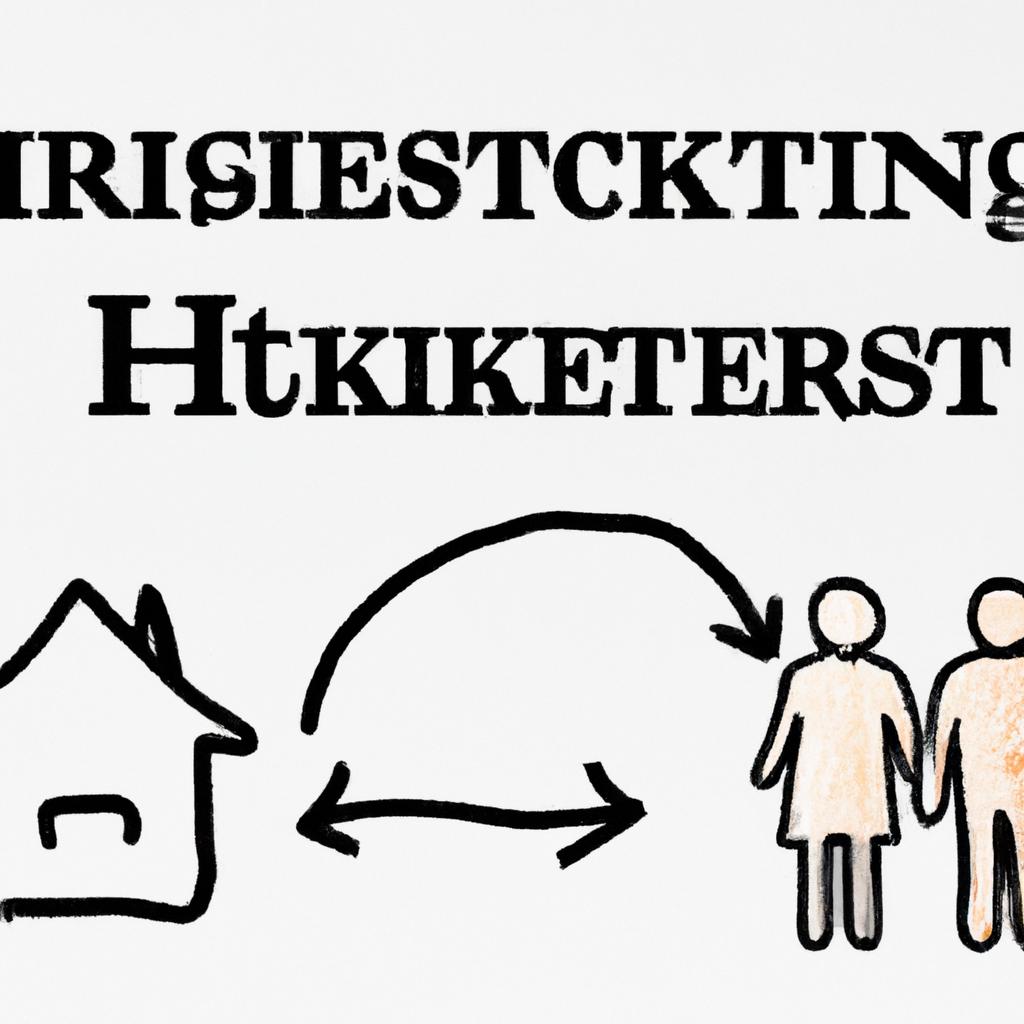In the complex realm of estate planning and inheritance law, a lesser-known yet nefarious practice looms over unsuspecting beneficiaries – inheritance hijacking. As seasoned legal practitioners at Morgan Legal Group in the bustling metropolis of New York City, we are well-versed in the intricacies of probate, elder law, Wills, and trusts. Join us as we delve into the devious world of inheritance hijacking, uncovering the methods, consequences, and safeguards against this covert threat to rightful beneficiaries.
Understanding the Concept of Inheritance Hijacking: A Legal Perspective
When discussing the concept of inheritance hijacking from a legal perspective, it is essential to understand the complexities and implications of such actions. Inheritance hijacking occurs when an individual manipulates or coerces a vulnerable or incapacitated person into changing their will or estate plan to benefit the perpetrator.
This deceptive practice often involves taking advantage of elderly individuals or individuals with diminished mental capacity. Inheritance hijacking not only undermines the wishes of the original estate owner but can also lead to detrimental consequences for rightful heirs and beneficiaries. It is crucial for individuals to be aware of the signs of inheritance hijacking and take necessary legal steps to protect their estate and assets.

Identifying Common Tactics Used in Inheritance Hijacking Cases
Inheritance hijacking refers to the illegal and unethical practice of manipulating or fraudulently acquiring someone’s inheritance. This can happen through various means, including coercion, forgery, and deception. In many cases, the perpetrators target vulnerable individuals, such as the elderly or those with diminished mental capacity, to carry out their schemes.
Common tactics used in inheritance hijacking cases include:
- Undue influence: When a person uses their power or authority to pressure or manipulate the testator into changing their will in their favor.
- Forgery: Falsifying or altering legal documents, such as a will or trust, to claim inheritance rights.
- Isolation: Separating the testator from their friends and family to exert control over their decisions and assets.

Protecting Your Estate: Strategies to Safeguard Against Inheritance Hijacking
Inheritance hijacking refers to the unauthorized manipulation or misappropriation of an individual’s estate or assets after their passing. This can occur through various means, such as fraudulent changes to a will, coercion of the deceased while they were still alive, or the misuse of power of attorney. These actions often result in rightful heirs being deprived of their inheritance, causing emotional distress and financial hardship for those affected.
To safeguard against inheritance hijacking, individuals can implement various strategies to protect their estate and assets. Some effective measures include:
- Creating a comprehensive and legally binding will that clearly outlines your wishes for the distribution of your assets.
- Designating a trusted executor or trustee to oversee the distribution of your estate.
- Regularly reviewing and updating your estate plan to account for any changes in your financial situation or family dynamics.
- Utilizing trusts to protect assets from potential creditors or disputes among heirs.
| Asset Protection Category | Strategies | Legal Documents Required |
|---|---|---|
| Real Estate | Title ownership under a trust | Deed of Trust |
| Investments | Diversification | Investment Policy Statement |
A: Inheritance hijacking refers to a form of cyber attack where an attacker gains unauthorized access to a deceased person’s online accounts and digital assets.
Q: How does inheritance hijacking occur?
A: Inheritance hijacking typically occurs when cyber criminals use various tactics such as phishing emails, social engineering, or malware to gain access to the deceased person’s login credentials or personal information.
Q: What are the consequences of inheritance hijacking?
A: The consequences of inheritance hijacking can be devastating, as the attacker can steal sensitive information, exploit financial accounts, or impersonate the deceased individual for malicious purposes.
Q: How can individuals protect themselves from inheritance hijacking?
A: To protect against inheritance hijacking, individuals should consider creating a digital estate plan, regularly updating passwords, enabling multi-factor authentication, and designating a trusted individual to handle their digital assets after their passing.
Q: Is inheritance hijacking a common threat?
A: While inheritance hijacking may not be as well-known as other cyber threats, it is becoming increasingly prevalent as more individuals conduct their personal and financial affairs online. It is important for people to be aware of this potential risk and take proactive measures to safeguard their digital assets.
In Retrospect
In conclusion, understanding the concept of inheritance hijacking is crucial in today’s digital age where personal information is constantly at risk. By being aware of how cyber criminals can exploit vulnerabilities in inheritance laws to gain access to sensitive data, individuals can take proactive measures to protect their assets and safeguard their legacy. Stay vigilant, stay informed, and stay protected against the threat of inheritance hijacking.
 In today’s digital age, cyber attacks are becoming increasingly sophisticated and targeted. One such attack vector that has gained attention in recent years is inheritance hijacking. This type of attack involves exploiting a vulnerability in the Windows operating system to gain unauthorized access to sensitive data or privileges through inherited permissions. In this article, we will delve into what inheritance hijacking is, how it works, and how to protect against it.
In today’s digital age, cyber attacks are becoming increasingly sophisticated and targeted. One such attack vector that has gained attention in recent years is inheritance hijacking. This type of attack involves exploiting a vulnerability in the Windows operating system to gain unauthorized access to sensitive data or privileges through inherited permissions. In this article, we will delve into what inheritance hijacking is, how it works, and how to protect against it.
What is Inheritance Hijacking?
Inheritance hijacking is a privilege escalation technique in which an attacker gains malicious access to a system by manipulating the inheritance of permissions on a vulnerable file. This technique exploits the way Windows handles inherited permissions and can be used to bypass security measures and gain access to sensitive data or system privileges.
How Does it Work?
Inheritance hijacking attacks typically start with the attacker gaining initial access to a system through a separate attack vector, such as phishing emails or exploiting unpatched software vulnerabilities. Once inside the system, the attacker will look for files with vulnerable permissions that can be exploited.
One such vulnerable file is the Windows registry, which is a central database that stores important system and user configuration information. The registry is a popular target for inheritance hijacking as it contains sensitive data such as user credentials, network configurations, and encryption keys.
The process of inheritance hijacking starts with the attacker finding a file with weak permissions, such as a registry key. The attacker then manipulates the inheritance of permissions on this file by adding their own user account to the list of authorized users. This allows them to gain access to the file and any sensitive data or system privileges associated with it.
Benefits and Practical Tips to Protect Against Inheritance Hijacking
Inheritance hijacking can be a powerful technique for attackers as it allows them to bypass traditional security measures and gain unauthorized access to a system. However, there are certain steps that individuals and organizations can take to protect themselves against this type of attack. Some practical tips include:
1. Regularly Update Software: Since inheritance hijacking often exploits vulnerabilities in unpatched software, it is crucial to keep all systems and software up to date. This includes operating systems, applications, and plugins.
2. Restrict User Access: Limiting the number of users who have access to sensitive files and limiting their permissions can help reduce the risk of inheritance hijacking. This means implementing the principle of least privilege, where users only have access to the specific resources they need for their job functions.
3. Monitor User Activity: Keeping a close eye on user activity, especially when it comes to critical systems and files, can help spot any suspicious activity and prevent an attack.
4. Implement Multi-Factor Authentication: Using multi-factor authentication can add an extra layer of security to prevent attackers from gaining access to sensitive systems or files even if they manage to exploit a vulnerability.
Case Studies and First-Hand Experience
Inheritance hijacking has been used in real-world attacks, highlighting its effectiveness as a technique for cybercriminals. In 2019, a ransomware attack known as MegaCortex targeted an organization’s domain controller, exploiting inherited permissions to encrypt the entire network and demand a ransom.
In another case, researchers discovered that the Sudo software used in most Linux and Unix systems had a vulnerability that could be exploited for inheritance hijacking. This vulnerability, known as CVE-2019-18634, allowed attackers to gain root privileges on vulnerable systems.
As for the first-hand experience, a cyber attack targeting a company I worked at used inheritance hijacking to gain unauthorized access to sensitive files on our network. This attack had a significant impact on the organization’s operations and demanded a lot of resources to mitigate.
Protecting Against Inheritance Hijacking is Crucial
In conclusion, inheritance hijacking has become a real and significant threat in the world of cybersecurity. It is a sophisticated and targeted attack that can be challenging to detect and prevent, making it important for individuals and organizations to take proactive measures to protect against it. By following best practices and implementing proper security measures, we can minimize the risk of falling victim to this type of attack. Stay safe and stay vigilant.


